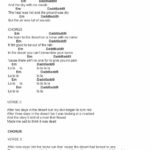From the raw, untamed sounds of early rock and roll to the face-melting aggression of modern metal, guitar distortion has been a cornerstone of countless genres. For guitarists seeking to inject their playing with extra bite and sustain, the Guitar Distortion Pedal is an indispensable tool. But with a vast array of options available, understanding what a distortion pedal does and how it differs from other gain-based effects is crucial.
Distortion Pedals: Adding Grit and Growl to Your Guitar
Essentially, a guitar distortion pedal works by clipping or “distorting” the audio signal of your guitar. This process adds harmonics and sustain, resulting in a tone that ranges from a subtle crunch to a full-blown sonic assault. Think of the snarling riffs of grunge or the chainsaw buzz of death metal – these are the sonic territories where distortion pedals reign supreme. Distortion pedals are known for delivering a harsher, more aggressive sound compared to their cousins, overdrive pedals.
Alt text: Electro-Harmonix Big Muff Pi distortion pedal showcasing its three control knobs for volume, tone, and sustain, iconic fuzz effect for guitarists.
A Brief History of Guitar Distortion
The quest for distorted guitar tones began in the early days of electric guitars. Blues musicians were among the first to experiment with overdriving their tube amplifiers to achieve a more aggressive sound. As rock ‘n’ roll emerged, this pursuit intensified. Pioneers like Link Wray, with his raw and edgy sound, demonstrated the power of distortion. By the mid-1960s, fuzz pedals exploded onto the scene, embraced by garage rock bands worldwide. Artists like Dave Davies of The Kinks and Pete Townshend of The Who cemented distortion as a defining element of rock music, shaping their signature sounds with overdriven and distorted tones.
Alt text: Iconic guitarist Pete Townshend of The Who performing live, playing a distorted electric guitar, emphasizing the historical use of guitar distortion in rock music.
Distortion vs. Overdrive: Understanding the Nuances
While both distortion and overdrive pedals are often grouped under the umbrella of “gain pedals” and achieve similar goals of adding gain and sustain, they differ in their sonic character. Overdrive pedals are designed to mimic the warm, compressed sound of a tube amplifier pushed to its limits. They produce a smoother, often warmer crunch that is ideal for blues, classic rock, and adding a mild boost to your amp. Distortion pedals, on the other hand, generally offer a more hard-edged, aggressive distortion. They create a wider range of distorted tones, from crunchy rhythm sounds to searing lead tones, making them suitable for genres like hard rock, metal, and punk. Choosing between a distortion and overdrive pedal ultimately comes down to the specific sound you’re aiming for and your personal taste.
Exploring Popular Distortion Pedal Options
The market is flooded with distortion pedals, each with its own unique flavor and sonic characteristics. For those seeking a legendary fuzz-style distortion, the Electro-Harmonix Big Muff Pi remains an iconic choice. This pedal, with its three simple controls, is capable of producing everything from warm, thick fuzz to screaming, sustained tones, making it a favorite for rock, stoner rock, and beyond.
Other notable distortion pedals to consider include the TC Electronic Dark Matter Distortion, known for its versatile and dynamic distortion, suitable for a range of rock and metal styles. The MXR M75 Super Badass Distortion offers a wide gain range and a responsive tone, making it a solid all-around distortion option for various genres.
Alt text: MXR Super Badass Distortion pedal integrated within a guitarist’s pedalboard setup, showcasing its compact design and use in a live performance context.
While the focus here is on distortion, it’s worth mentioning classic overdrive pedals like the Ibanez Tube Screamer and the Boss Super OverDrive SD-1, which are excellent for achieving smoother, amp-like gain tones and can complement distortion pedals in a guitarist’s setup.
Finding Your Perfect Distortion Pedal
Whether you’re chasing the heavy snarl of Black Sabbath, the buzzsaw attack of Johnny Ramone, or the feedback-drenched chaos of Nirvana, the perfect guitar distortion pedal to unlock your desired tone is out there. Exploring different pedals, experimenting with their settings, and understanding the nuances of distortion versus overdrive will empower you to sculpt your guitar sound and take your playing to new sonic heights.

